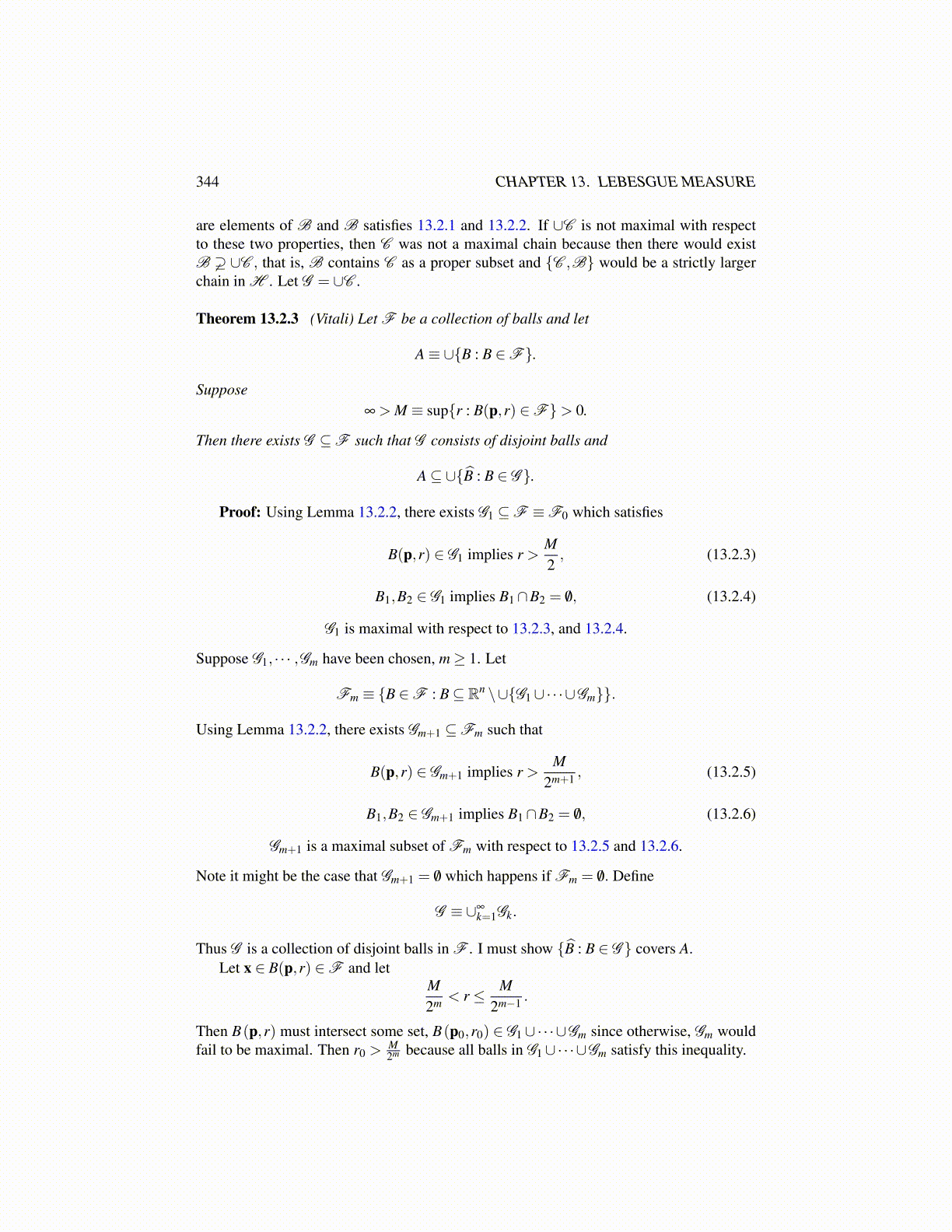
344 CHAPTER 13. LEBESGUE MEASURE
are elements of B and B satisfies 13.2.1 and 13.2.2. If ∪C is not maximal with respectto these two properties, then C was not a maximal chain because then there would existB ⊋ ∪C , that is, B contains C as a proper subset and {C ,B} would be a strictly largerchain in H . Let G = ∪C .
Theorem 13.2.3 (Vitali) Let F be a collection of balls and let
A≡ ∪{B : B ∈F}.
Suppose∞ > M ≡ sup{r : B(p,r) ∈F}> 0.
Then there exists G ⊆F such that G consists of disjoint balls and
A⊆ ∪{B̂ : B ∈ G }.
Proof: Using Lemma 13.2.2, there exists G1 ⊆F ≡F0 which satisfies
B(p,r) ∈ G1 implies r >M2, (13.2.3)
B1,B2 ∈ G1 implies B1∩B2 = /0, (13.2.4)
G1 is maximal with respect to 13.2.3, and 13.2.4.
Suppose G1, · · · ,Gm have been chosen, m≥ 1. Let
Fm ≡ {B ∈F : B⊆ Rn \∪{G1∪·· ·∪Gm}}.
Using Lemma 13.2.2, there exists Gm+1 ⊆Fm such that
B(p,r) ∈ Gm+1 implies r >M
2m+1 , (13.2.5)
B1,B2 ∈ Gm+1 implies B1∩B2 = /0, (13.2.6)
Gm+1 is a maximal subset of Fm with respect to 13.2.5 and 13.2.6.
Note it might be the case that Gm+1 = /0 which happens if Fm = /0. Define
G ≡ ∪∞k=1Gk.
Thus G is a collection of disjoint balls in F . I must show {B̂ : B ∈ G } covers A.Let x ∈ B(p,r) ∈F and let
M2m < r ≤ M
2m−1 .
Then B(p,r) must intersect some set, B(p0,r0) ∈ G1∪·· ·∪Gm since otherwise, Gm wouldfail to be maximal. Then r0 >
M2m because all balls in G1∪·· ·∪Gm satisfy this inequality.